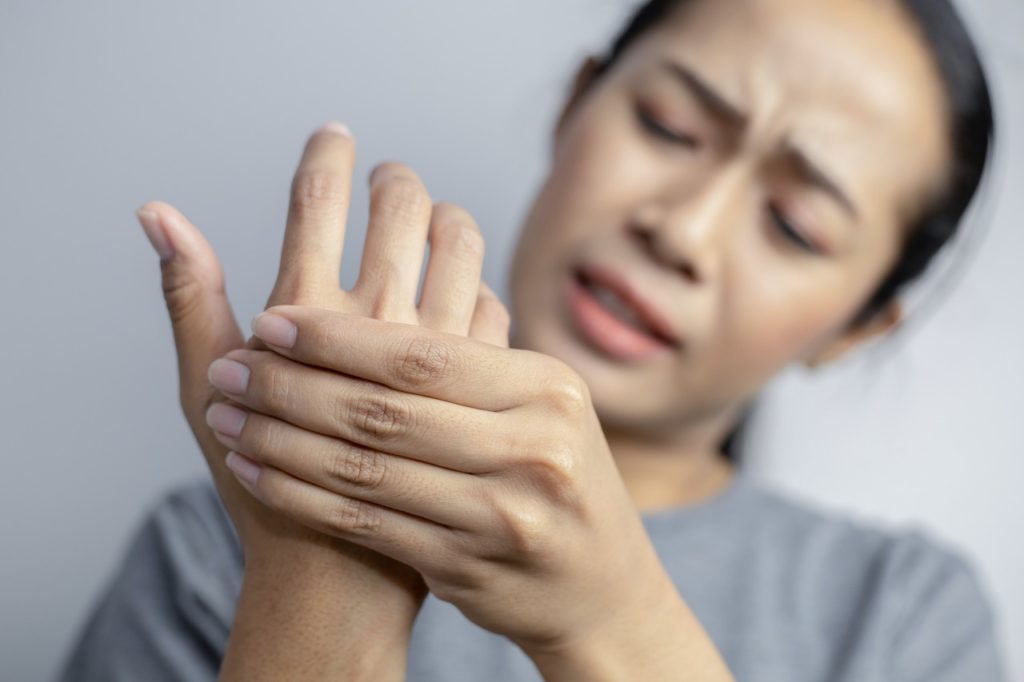Small fiber neuropathy is a disorder that affects the small nerve fibers in your body. These nerve fibers are responsible for sensations, such as feeling pain, heat, and cold. Small fiber neuropathy can cause you to lose feeling in your hands and feet, as well as experience numbness and tingling. Other common symptoms include burning sensations, itching, and a pins-and-needles feeling.
Small fiber neuropathy is a relatively rare condition, affecting approximately 1 in 2,000 people. It can occur at any age but is most commonly diagnosed in people over the age of 50. Small fiber neuropathy is often caused by another medical condition, such as diabetes or alcoholism. However, in some cases, the cause of small fiber neuropathy is unknown.
What are the symptoms of this condition?
The symptoms of small fiber neuropathy can vary from person to person. Some people may only experience a few mild symptoms, while others may have more severe symptoms that significantly impact their quality of life. The most common symptoms include:
• Loss of feeling in hands and feet
• Numbness
• Tingling
• Burning sensations
• Itching
• Pins-and-needles feeling
What causes small fiber neuropathy?
Small fiber neuropathy can be caused by several different factors, including:
• Diabetes
• Alcoholism
• Infections
• Neurological conditions, such as multiple sclerosis or Lou Gehrig’s disease
• Autoimmune diseases, such as rheumatoid arthritis or lupus
• Cancer treatments, such as radiation therapy or chemotherapy
• Trauma, such as a car accident or burn
• Genetics
In some cases, the cause of small fiber neuropathy is unknown.

How is it diagnosed?
Small fiber neuropathy can be difficult to diagnose because its symptoms are similar to those of many other conditions. The most common way to diagnose small fiber neuropathy is by performing a nerve biopsy. This is a surgical procedure in which a tiny piece of your nerve is removed and examined under a microscope.
Other tests that may be used to diagnose small fiber neuropathy include:
• A physical exam can help your doctor identify any abnormalities in your hands and feet
• Blood tests, can help rule out other conditions that may be causing your symptoms
• Nerve conduction tests, can help measure the electrical activity in your nerves
• Skin biopsy, which involves removing a small piece of skin from your arm or leg to be examined under a microscope
What are the other treatment options?
There is no cure for small fiber neuropathy, but there are several treatment options available that can help manage your symptoms. These include:
• Taking medications, such as painkillers or anti-seizure drugs, to help ease your symptoms
• Physical therapy can help improve strength and mobility in your hands and feet
• Occupational therapy can help you adapt to any changes in your ability to function caused by small fiber neuropathy
• Counseling, can help you cope with the emotional effects of small fiber neuropathy
• Dietary changes, such as increasing your intake of omega-3 fatty acids or probiotics
• Nerve stimulation therapies, such as transcutaneous electrical nerve stimulation (TENS) or acupuncture
• Acupuncture, which may help relieve some of the symptoms
• Biofeedback, can help you learn how to control certain body functions that may be affected by small fiber neuropathy, such as heart rate and blood pressure
In some cases, surgery may be recommended to treat certain symptoms. For example, surgery may be recommended to relieve pain or reduce the risk of infection.

What are the potential side effects of these treatments?
The potential side effects of the treatments for small fiber neuropathy vary depending on the treatment you are undergoing. However, some common side effects include:
• Dizziness
• Headache
• Nausea
• Vomiting
• Constipation
• Diarrhea
• Fatigue
• Sleep problems
• Memory problems
• Sexual problems
• Dry mouth
• Increased risk of infection
• Rash
• Swelling
• Pain
Physical therapy and occupational therapy can also cause side effects, such as pain and fatigue. And while acupuncture is generally considered a safe treatment, it can occasionally cause minor side effects, such as bruising or bleeding.
It’s important to talk to your doctor about the potential side effects of any treatment you’re considering for small fiber neuropathy. They can help you weigh the pros and cons of each treatment and decide which is best for you.
How can you manage your symptoms if you have been diagnosed with small fiber neuropathy?
There is no one-size-fits-all answer to this question, as the best way to manage your symptoms will vary depending on your situation. However, some tips that may help include:
• Take regular breaks throughout the day, especially if you’re experiencing fatigue
• Adjusting your diet to include more healthy foods and avoiding foods that tend to aggravate your symptoms
• Practicing stress-relieving techniques such as yoga or meditation
• Joining a support group for people with small fiber neuropathy. There are many online and in-person support groups available that can offer you practical tips, emotional support, and resources.
• Exercising regularly, but pacing yourself to avoid fatigue
• Keeping a journal to track your symptoms and any treatments that seem to help
• Talking to a counselor if you’re feeling overwhelmed or stressed by your diagnosis
They can be a challenging condition to live with, but with the right treatment plan, you can manage your symptoms and live a full life. Talk to your doctor about what treatments may be best for you.

What is the prognosis for someone with small fiber neuropathy?
There is no one answer to this question, as the prognosis, can vary from person to person. However, in general, the prognosis is good. Small fiber neuropathy is a chronic condition, but most people with the condition experience only mild symptoms and go on to lead relatively normal lives.
In some cases, however, the condition can progress and cause more serious problems, such as infection or pain. It’s important to talk to your doctor about the prognosis for small fiber neuropathy in your specific case. They can help you understand what to expect and provide you with the support you need to manage your condition.
What research is being done to find a cure for this condition?
There is currently no cure for small fiber neuropathy, but researchers are actively investigating new treatments and therapies. Some of the areas of research that are being explored include:
• Developing new treatments that can help relieve the symptoms
• Investigating the possible causes of the condition and looking for ways to prevent or treat it
• Studying how small fiber neuropathy affects the body and trying to identify biomarkers that could be used to diagnose it more accurately
• Investigating whether lifestyle changes, such as diet and exercise, can help improve symptoms in people with small fiber neuropathy
• Studying the effect of different treatments, such as medications, physical therapy, and acupuncture
• Developing new tests to help diagnose small fiber neuropathy more accurately
The National Institute of Neurological Disorders and Stroke (NINDS) is one of the main organizations funding research into small fiber neuropathy.
You can learn more about their current research projects by visiting their website.
While there is currently no cure for small fiber neuropathy, researchers are making progress in understanding the condition and developing new treatments. With continued research, it is hoped that a cure will be found in the future.



